Alienware 34 Curved QD-OLED AW3423DW gaming monitor review: a great choice for well-heeled gamers
The Alienware AW3423DW gaming monitor offers excellent color, brightness and a sleek design, but it's not for everyone
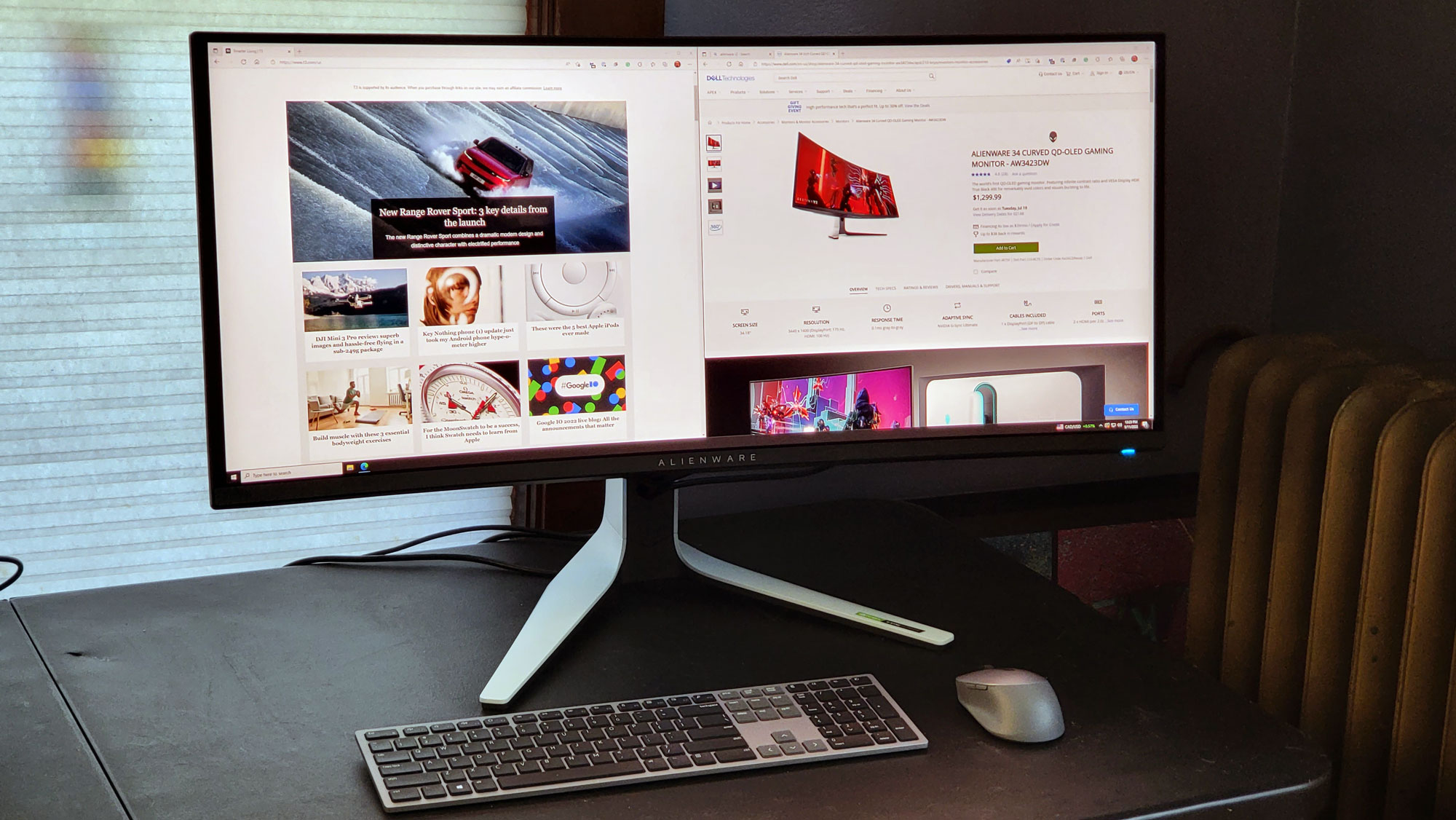
The Alienware AW3423DW is an impressive gaming monitor that offers stunning color and plenty of brightness, thanks to a combination of Quantum Dots and OLED. But you pay a lot for the top-tier performance.
-
+
Excellent, bright image quality makes for engaging gaming
-
+
The attractive design keeps cables out of the way
-
-
Less than 4K resolution
-
-
No AMD FreeSync support
Why you can trust T3

What do you get if you combine two cutting-edge display technologies into one? You get something like the Alienware AW3423DW, a 34-inch curved display that includes both Quantum Dots and an Organic LED display panel. The idea is that this combines the color and brightness of Quantum Dots (tiny dots that glow at specific colors when excited) with the deep, rich colors of Organic Light-Emitting Diode displays. The result? A stunning display that makes games pop with incredible clarity and realism. It isn’t a great pick for professional use or watching moves, but it is, without doubt, one of the best gaming monitors we’ve seen.
It sits at the top of the lineup of Alienware branded monitors, with the same price as their previous flagship, the 38-inch AW3821D. That makes it a pricy pick for anyone, but it stood up to our battery of tests using several modern games, a spectrophotometer, and a critical eye. You’ll need a powerful gaming PC to drive this monitor, but the results are excellent.
To discover more about how we review products for T3, take a look at our How we test page.
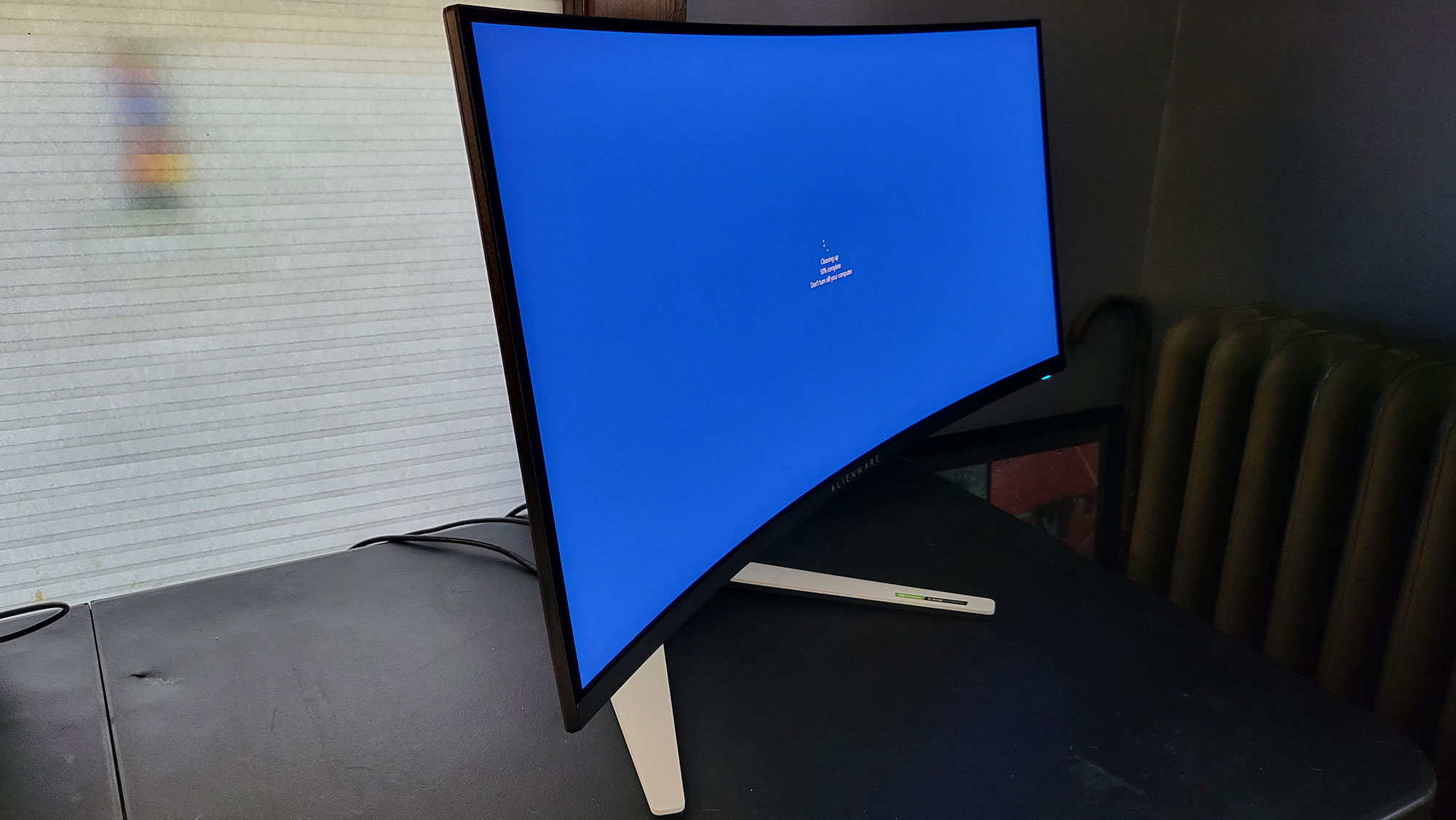
Alienware AW3423DW 34-inch curved gaming monitor review: price and availability
The Alienware 34 Curved QD-OLED gaming monitor AW3423DW is available now, priced at £1099/$1299/AU$2299. Make sure you check our Dell discount codes to see if you can lower the cost.
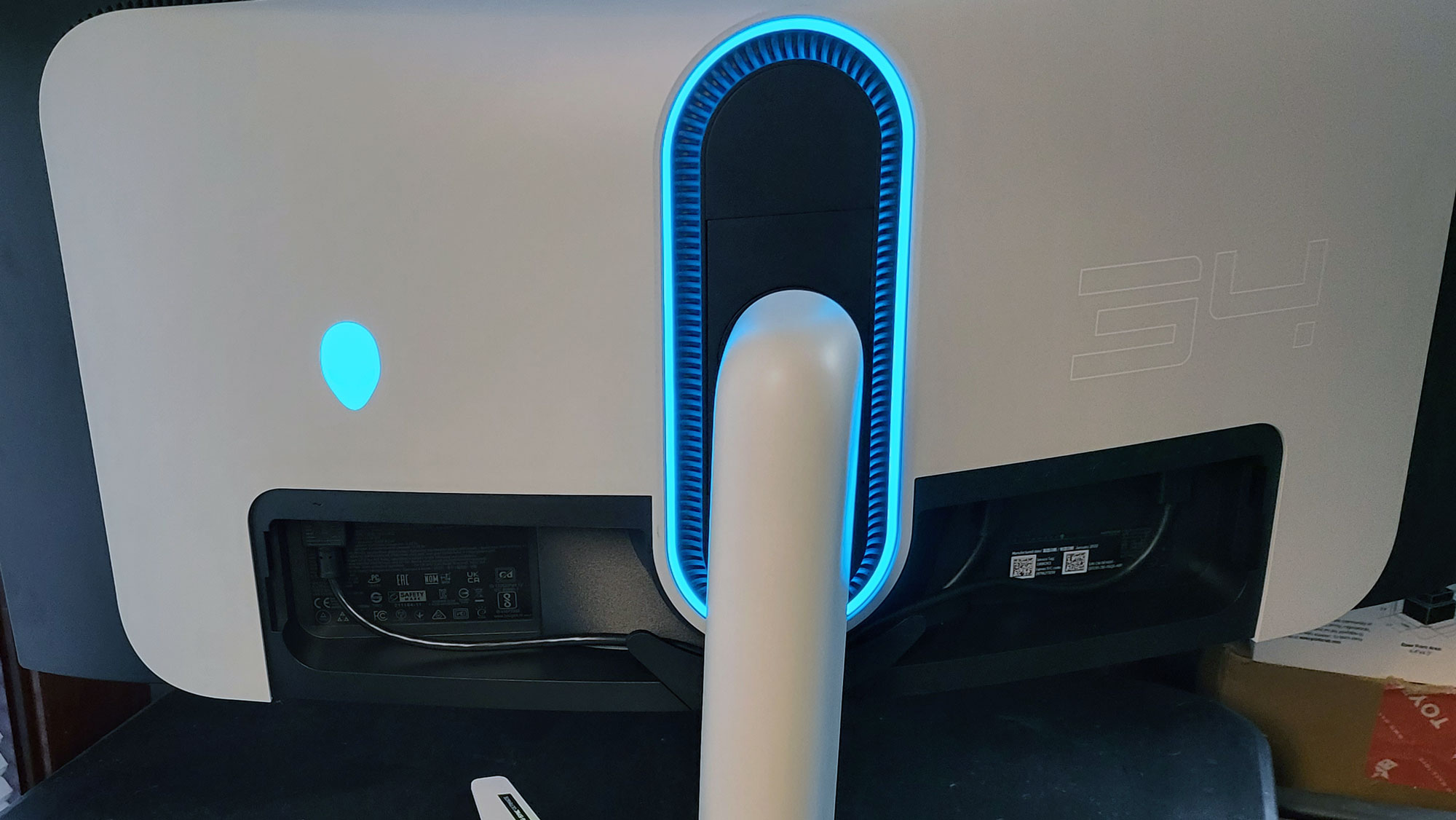
Alienware AW3423DW 34-inch curved gaming monitor review: design and build quality
When the Alienware AW3423DW was first delivered to my door, my wife commented that it was “vulgarly large”. I suggested that she had a point, but that at least it wasn’t the 38-inch version. She, as usual, is right, though. At over 32 inches wide, this thing will dominate any desk or table you plonk it on. Is that a good thing? From a gaming point of view, yes. The huge 21:9 aspect ratio 34-inch screen with an 1800R curve creates a more immersive view, because the sides of the monitor stay in focus. With a large flat screen, your eye has to refocus on the edges of the screen, which breaks the immersive feeling and can cause eye strain over a long gaming session. With an appropriately curved screen, the whole screen is in focus at the same time. If you glance over to the edge of the screen, your eyes don’t have to refocus.
Well, for the person sitting right in front of it, at least. Others sitting around don’t get the effect. Sit more than one person in front of this and one of them will probably complain that it looks wrong. So, this isn’t a monitor that can double as a family movie screen. It is designed for one person to use. The rather extreme 1800R curve of the screen (meaning that it is curved along a circle with a radius of 1800 millimeters, or 1.8 meters) means that the user has to be sitting quite close to get the full effect – less than 1.8 meters, or six feet. So, it is for games, but not movies.
It is worth digging into the details of what is inside the monitor. According to Dell, the display itself has four layers: an oxide backplate that conducts heat away from the other layers, a blue light-emitting OLED layer, then the Quantum Dot layer, which absorbs the blue light and releases it as different colors of light, creating the final image. A protective layer sits on top of these fragile components, bending the monitor into its characteristic curve. The point of all of this technology is that the monitor offers the best of both OLED and Quantum Dots. Each pixel of the OLED only releases light if it is triggered, so there is no constantly-on backlight that makes for muddy blacks. The Quantum Dot layer of the monitor creates very bright, clear colors from the blue of the OLED layer, so you get excellent brightness from the screen.
The screen also has a very high refresh rate. Quantum Dots respond quickly to changes, so it can change the image on the screen up to 175 times per second, or a 175Hz refresh rate. Support is also offered for NVidia’s G-Synch Ultimate feature, where the graphics card and monitor co-operate to vary the refresh rate as the image changes quickly or slowly. There is no support for AMD’s equivalent FreeSynch technology, though I was still able to drive this monitor at 175Hz from an AMD graphics card. You just don’t get the fancy on-the-fly refresh rate adjustment that FreeSynch adds.
The AW3223DW also supports High Dynamic Range (HDR) video modes, as well as covering 99 percent of the DCI-P3 color gamut used by professional filmmakers. There are two HDR modes, HDR 400 True Black and HDR Peak 1000. The latter makes the image brighter, but at the cost of a little loss of detail in the black parts of the image, and some issues with bright parts of the image dimming when they are larger.
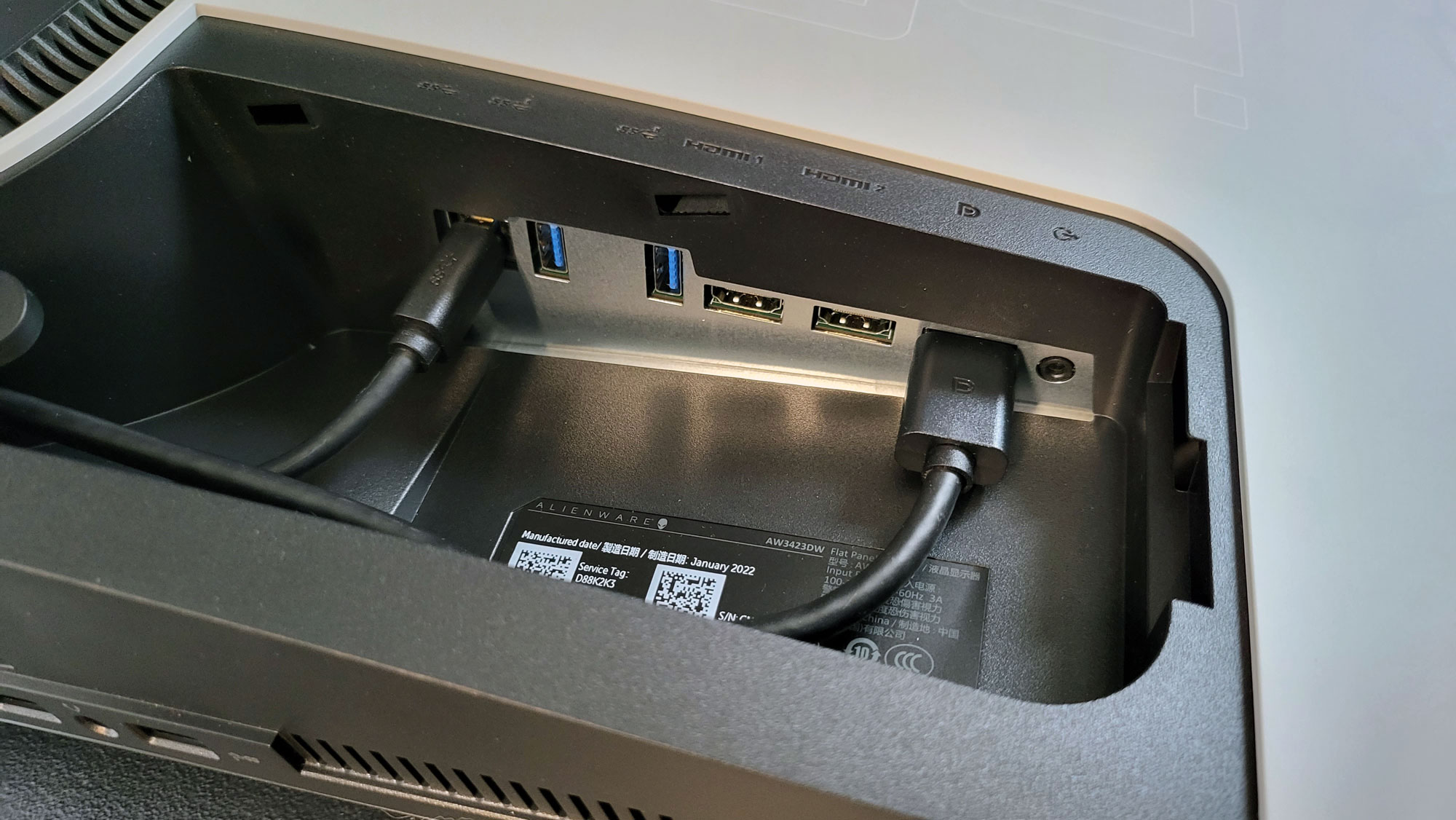
You get plenty of inputs for this monitor, with one DisplayPort and two HDMI 2.0 inputs. There is no support for the latest HDMI 2.1 standard, though. Dell claims that, because consoles like the XBox One and PS5 don’t support the 21:9 aspect ratio, there is no need. There would be no advantage in supporting HDMI 2.1 as no current console could output a signal that would use it.
Remember, this is not a 4K monitor, so an Xbox Series X will step down to a QHD (2560x1440) image, while a PS5 will go to a Full HD (1920 by 1080 pixels) image. So, this isn’t a great pick as a primary monitor for console gaming. You’ll get a great-looking image, but it won’t use the full resolution or scree of this unusual monitor. It’s primarily for PC gaming, but you can use it for console gaming if the kids are hogging your 4K TV.
One USB 3.2 input is also available, as are two USB 3.2 outputs. There is no USB-C, though, and you can’t drive this monitor over the USB connection – it is purely for peripherals. In these days of USB-C everywhere, this seems like an odd omission, but it speaks to the gaming role of this display, which will be driven from a graphics card with a DisplayPort output on a PC or laptop.
The cables are routed within the attractive stand to keep them out of the way, and the whole setup looks clean and professional. The stand is also very adjustable, allowing you to lower the monitor to within 3 inches of your desk, or up to 7.25 inches above. It can also tilt the monitor back up to 20 degrees, or forward up to five degrees and 20 inches left or right.
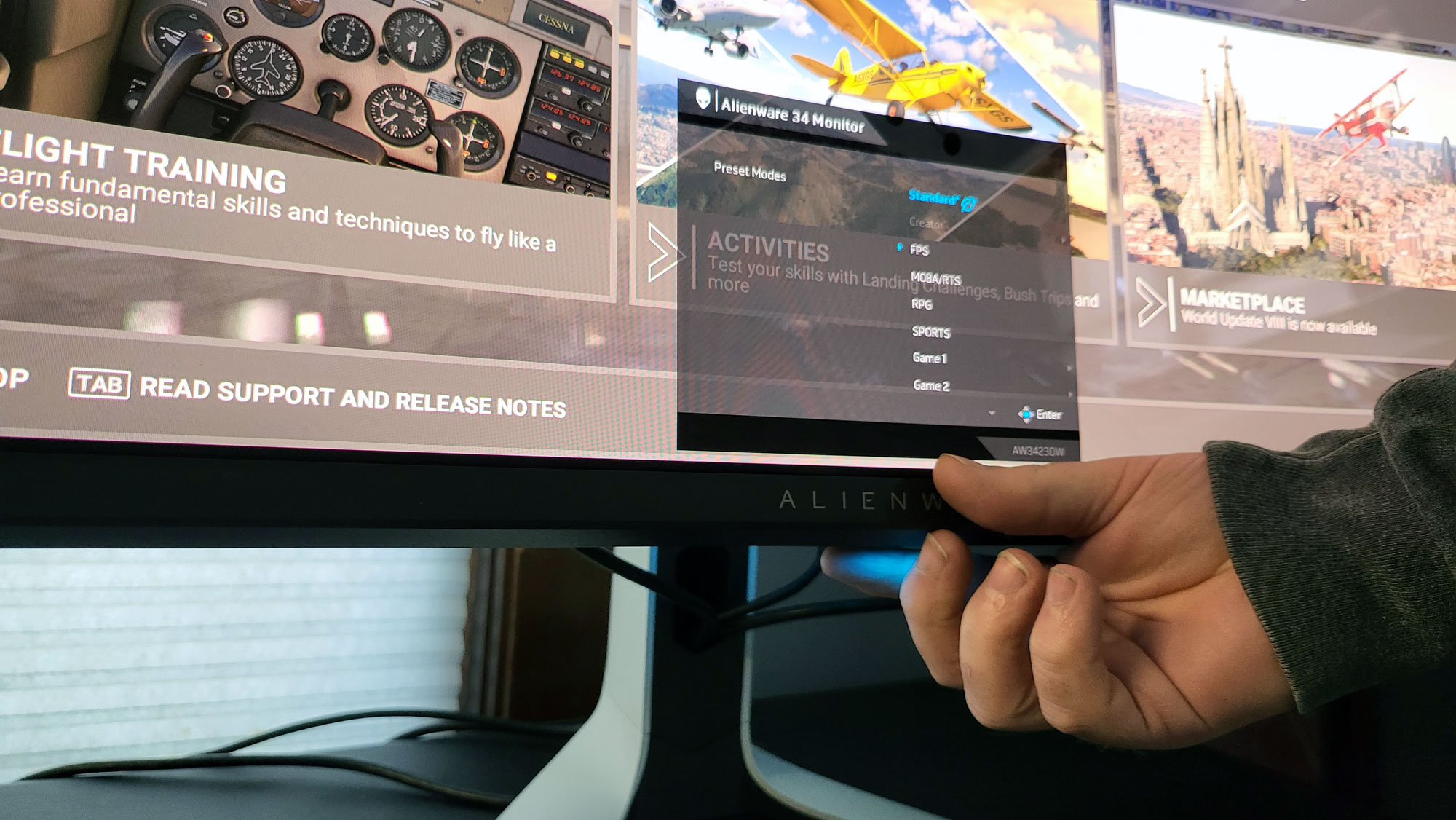
Alienware AW3423DW 34-inch curved gaming monitor review: specs and performance
So, what does all of this techno-babble mean? The Alienware AW3423DW looks bloody awesome. Images have deep blacks and bright clean whites and colors on screen at the same time in a way that makes most standard LCD displays look like poorly developed photos. The experts call this dynamic range, and this monitor has it. I tested the AW3223DW with several modern games, including Doom Eternal and Microsoft Flight Simulator 2022, and they all looked uniformly excellent, with the bright, vivid colors adding to the gory experience of Doom Eternal. Microsoft Flight Simulator looked very realistic, with the high dynamic range showing up in things like the sun glancing off the metalwork of the plane next to deep, dark shadows on the ground. That increases the immersive feel that games like Flight Simulator aim for – it looks more like the real world.
There are a couple of caveats, though. Some games (such as Elden Ring) don’t support the unusual 21:9 aspect ratio of the monitor, so you end up with black bars on the left and right. While you might think that a widescreen monitor like this would be good for video editing, it lacks support for 4K video; the 3440 by 1440 pixel resolution of the screen means that it has less than 4K resolution on the vertical. This means that 4K video is scaled down to fit, so you won’t get a full preview of 4K movies and videos.
I also noticed that the brightness of the screen was rather variable when using the display for things other than gaming. In the standard HDR 400 mode, I measured the brightness of a small area of white at about 212 Cd/m2 (Candelas per meter squared). That’s a decent result, but when I measured it again with a larger area of white, the brightness fell to 135 Cd/M2. Switching to the HDR Peak 1000 mode, the small area increased to 294 Cd/m2, but dropped to 185 Cd/m2 with a larger area of white on the screen. That’s because when it is showing large areas of bright white, the display notches the brightness down to prevent the OLED layer from overheating. You might recall that older plasma displays had a similar problem. That’s not a big deal for gaming, but it is a pain for other tasks: do some writing in Word on this display (which shows black text on a white page) or edit photos shot against a white background in Photoshop, and the overall brightness dims visibly.
To be fair, most games don’t show large amounts of white: they tend more to go for a dark, gloomy look with splashes of color, which this display excels at. But it could be a problem if you are looking to do things other than gaming with this monitor.
When the monitor has been on for a while, it also asks you if it can use a special refresh mode when you turn it on or off. If you agree, the monitor goes mostly black and the power light pulses as the screen resets the pixels to prevent any pixels from getting stuck if you display a static image for a long time. The process takes about five minutes.
You’ll also need a pretty beefy gaming PC to drive this big monitor. I tested it with the Alienware x17 R2 gaming laptop, which includes a speedy NVidia RTX 3080 Ti Laptop GPU chip. I will be reviewing this laptop separately soon. This managed an impressive (and wonderfully fluid and smooth-looking) 110 frames per second in Doom Eternal in Ultra Nightmaregraphics mode. But a non-gaming laptop choked. I tried connecting a Microsoft Surface Laptop Studio, which runs an NVidia GeForce 3060 GPU, and managed only an unplayable 10 frames per second. Bottom line: if you want to drive this big, expensive monitor, you will need a big and probably expensive gaming PC or laptop.
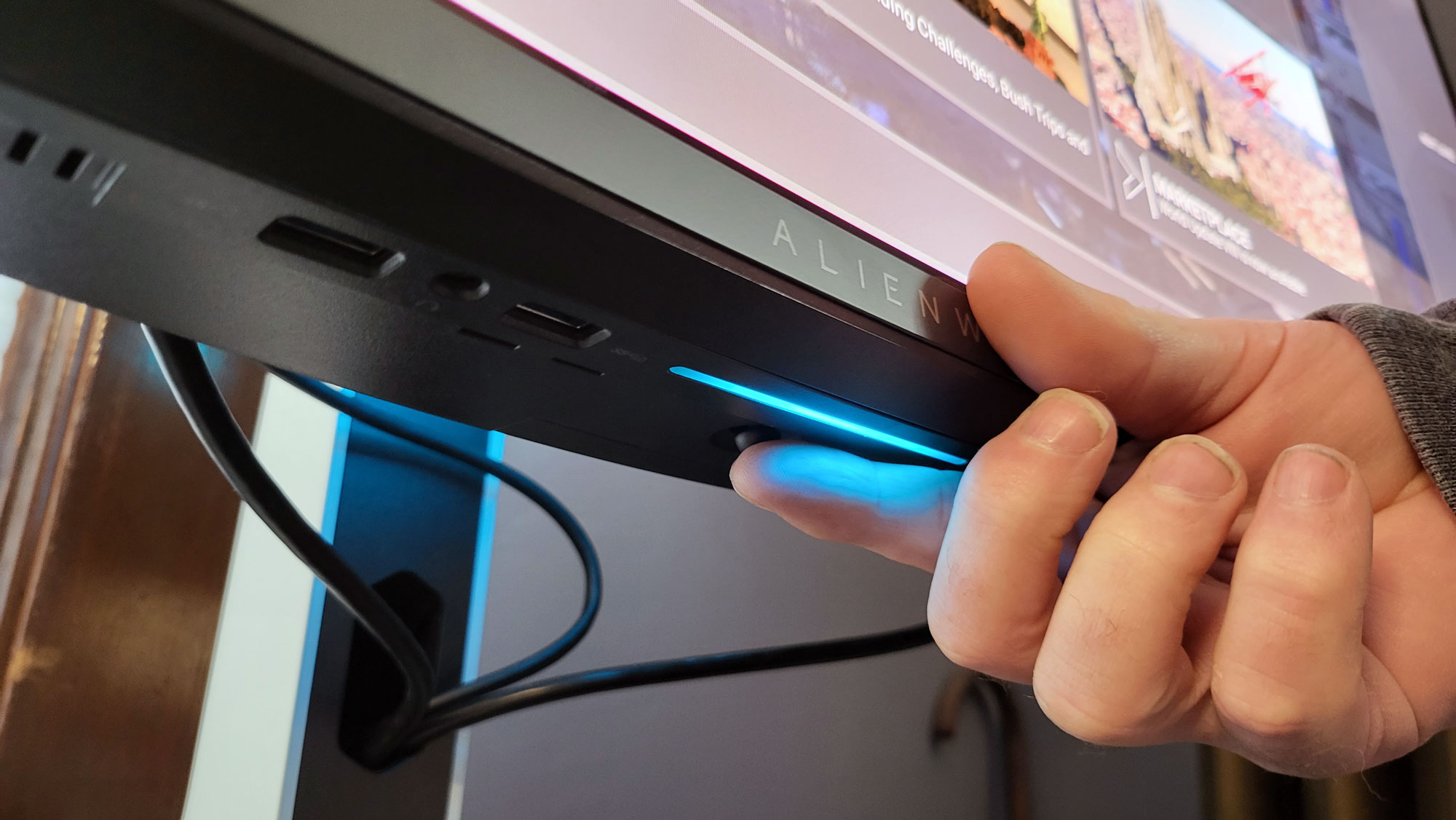
Alienware AW3423DW 34-inch curved gaming monitor review: verdict
The AW3423DW is an excellent monitor that offers incredible image quality when you drive it from a fast gaming PC. Run a first-person-shooter game and you’ll be immersed in the game with bright, vivid colors and deep, detailed shadows. Is it worth the money? If you are a serious gamer who wants that immersion, yes. For more casual gamers, a cheaper option may be better suited.
Where it doesn’t work quite so well was in non-gaming apps. The brightness dips when most of the screen is white, such as writing in a word processing document. The vertical resolution is also less than 4K, so you don’t get a full preview of 4K content.
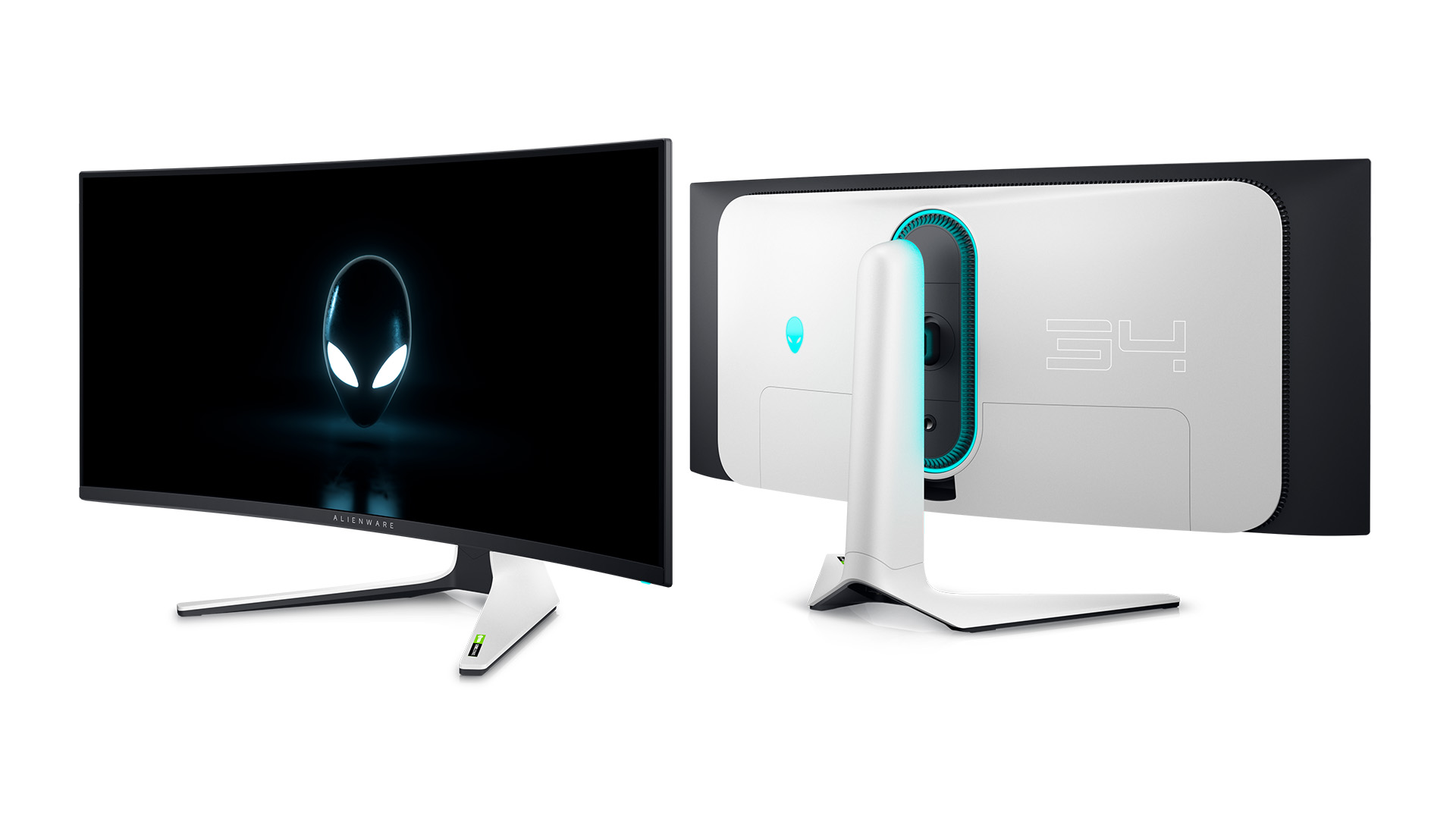
Alienware AW3423DW 34-inch curved gaming monitor review: also consider
There are plenty of competitors for the top dog in the pack of best premium gaming monitors. The closest competitor to this monitor would be the LG Ultragear 34GN850, which has similar styling, resolution and features, but without the eye-popping color of the Quantum Dot/OLED combo on the Alienware. It is somewhat cheaper, though, and is currently available for about £750/$800. If you don’t mind losing a few inches, the Monoprice Dark Matter 27-inch costs less than three hundred bucks and offers excellent performance (though is only available in the US). Heck, you could buy three of these and a triple monitor stand for the ultimate big monitor and still have money left over.
Sign up to the T3 newsletter for smarter living straight to your inbox
Get all the latest news, reviews, deals and buying guides on gorgeous tech, home and active products from the T3 experts
Richard Baguley has been writing about technology since the 1990s, when he left a promising career in high finance to work on Amiga Format magazine for Future. It has been downhill for him ever since, writing for publications such as PC World, Wired and Reviewed.com. He has tested gadgets as diverse as 3D printers to washing machines. For T3, he covers laptops, smartphones, and many other topics. He lives near Boston in the USA with his wife, one dog, and an indeterminate number of cats.
-
 Warning: Ciele’s refreshed Elite Collection may cause excessive garment envy on race day
Warning: Ciele’s refreshed Elite Collection may cause excessive garment envy on race dayFlex on your run crew with Ciele’s latest drop
By Matt Kollat Published
-
 Smeg adds a touch of navy sophistication to its iconic breakfast set
Smeg adds a touch of navy sophistication to its iconic breakfast setIt's a minimalist's dream
By Lizzie Wilmot Published
-
 My most anticipated Netflix movie of the year gets a wild new trailer
My most anticipated Netflix movie of the year gets a wild new trailerHavoc looks pretty unbelievable
By Max Freeman-Mills Published